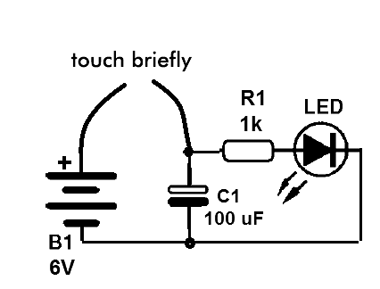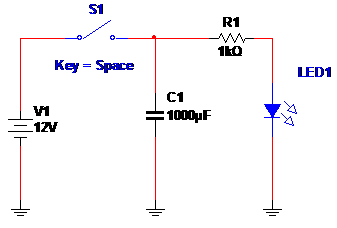A capacitor stores electrical charges. This component is formed by two metal parts called armatures which are separated by an insulating material called dielectric.
In an electrolytic capacitor, the armor are rolled in aluminum foils and between it there is a paper soaked in a substance conductive called electrolyte.
The electrolyte attack the aluminum foil forming a thin insulating layer which gives the component properties, i.e., determines how much charge it can hold.
The capacitor is loaded when the plate is connected to the battery.
If the capacitor is connected to a LED, in this case, it discharged slowly keeping the LED is on for determined time.
If value of the capacitor is greater and the smaller the current required by the LED, greater will be the time of the LED is on. As we have seen, the current required by the LED depends on the resistor we turn in series with it.
In our circuit we turned on the LED and the resistor directly to the capacitor, the capacitor discharge will be relatively quick because the resistor has a low value. In the simulation we increased the value of the capacitor.

The simulation is shown next figure.

To download the simulation files and Netlist - click here (msb0059.zip)